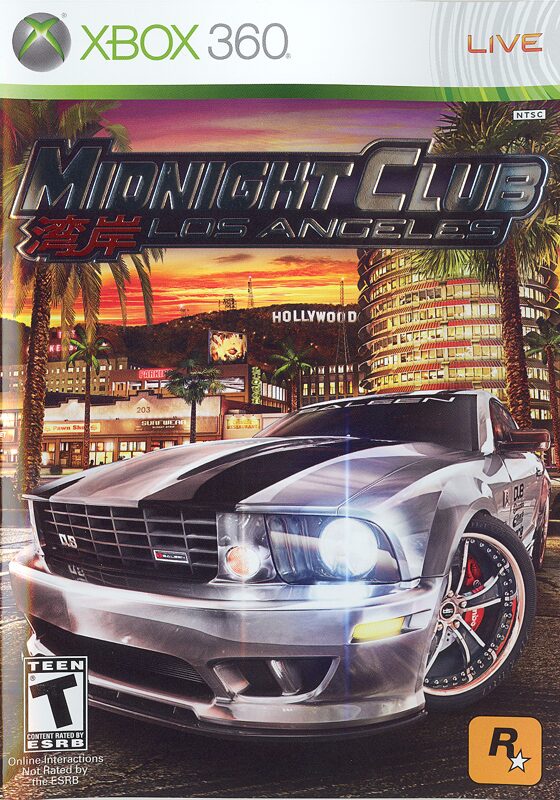Retro Replay Review
Gameplay
Midnight Club: Los Angeles drops you into an expansive recreation of the City of Angels, giving you full freedom to explore its sun-drenched boulevards, winding freeways, and hidden alleyways. Whether you’re piloting a souped-up import tuner, a roaring American muscle car, or a nimble sport bike, the city becomes your personal playground. The ability to flash your headlights at unsuspecting drivers to initiate an impromptu race injects a sense of spontaneity and discovery that keeps you on your toes from your first lap to your twentieth.
(HEY YOU!! We hope you enjoy! We try not to run ads. So basically, this is a very expensive hobby running this site. Please consider joining us for updates, forums, and more. Network w/ us to make some cash or friends while retro gaming, and you can win some free retro games for posting. Okay, carry on 👍)
The variety of events on offer keeps the action fresh across the map. From Circuit and Unordered Races to high-speed Freeway Races, Time Trials, and multi-heat Tournaments, there’s always a new challenge around the corner. Wager Races and Pinkslip Races raise the stakes by putting your precious ride on the line, while Red Light Racer adds a pulse-pounding twist by splitting each race into tense, traffic-light starts. Throw in telephone challenges, delivery runs, and even payback scenarios, and you’ll find the city’s pulse matches your own defiance of speed limits.
One standout mechanic in Midnight Club: Los Angeles is the “attack” system. Armed with Zone (slow-motion precision driving), Agro (crushing force), Roar (clearing obstacles with a shockwave), and EMP (disabling opponents or police vehicles), you feel like an urban gladiator in a four-wheeled (or two-wheeled) arena. Coordinating these abilities strategically—slowing down time to navigate claustrophobic lanes, ramming rivals off course, or shutting down a tailing police cruiser—injects a layer of tactical depth often missing from pure racing simulators.
Graphics
The cityscape of Los Angeles never looked so alive. Midnight Club: Los Angeles boasts impressive draw distances and detailed textures that capture the sunlit glamour and gritty underbelly of L.A. Iconic landmarks—from Hollywood Boulevard to the Griffith Observatory—are rendered with surprising fidelity. Reflections on wet pavement, realistic debris on roadside shoulders, and dynamic weather effects add layers of immersion that make each race feel cinematic.
Vehicle models stand out in the pack, too. Whether you’re customizing the sheen of a fresh paintjob, swapping out your rims for a set of killer alloys, or tweaking the glow of your underbody neon, every modification is reflected in crisp, high-resolution visuals. Interior dashboards, tire smoke, and the way headlights pierce nighttime fog all showcase a level of attention to detail that few street racers before or since have matched.
Performance on consoles of the era remains commendable. The game maintains a solid frame rate even in the thick of rush-hour traffic or multi-car pileups. Pop-in is minimal, and collisions deliver satisfying physical feedback, with car bodies crumpling and shattering realistically. The day-night cycle and shifting ambient light contribute to the sense that you’re really tearing through Los Angeles, not just a static map.
Story
While Midnight Club: Los Angeles isn’t a narrative-heavy title in the traditional sense, it still crafts a compelling arc through its Story Mode. You begin as an unknown racer, eking out a reputation in back-alley hustles and late-night street fights. Each victory beefs up your REP meter, unlocking more lucrative races and drawing you deeper into the city’s underground racing hierarchy.
The progression feels organic—beat one street boss, earn enough cash and reputation to step into his domain, and then challenge a tighter circle of elites. Although rival characters aren’t given novel-by-novel backstories, their distinct identities and signature vehicles make each confrontation memorable. Cinematic cutscenes bookend key victories, providing just enough narrative glue to drive you onward without bogging down the adrenaline-fueled racing action.
Upgrades and customization tie directly into the story’s flow. As you amass REP, you can purchase new performance parts—engines, turbos, nitrous systems—and appearance mods like spoilers, body kits, and neon kits. This constant progression both looks and feels rewarding, ensuring that each new chapter of your racer’s rise is marked by a tangible evolution of your ride.
Overall Experience
Midnight Club: Los Angeles marries arcade-style thrills with the open-world freedom typically reserved for top-tier action titles. The city isn’t just a backdrop; it’s a co-star in every high-speed chase and street shootout you’ll undertake. Cops patrol relentlessly, deploying spike strips, helicopters, and ramming tactics that can turn a casual cruise into a heart-pounding escape sequence.
Replayability is another strong suit. Between the dozen event types, the pursuit-oriented “Cops and Robbers” mode, and the endless lure of reaching 100% REP to unlock the final set of elite cars, there’s always a reason to come back for “one more race.” Online integration (where available) extends the fun further, allowing you to test your customized dream machine against human competitors in real time.
No game is without minor flaws—traffic A.I. can sometimes feel rubber-banded, and the most daring shortcuts occasionally lead to glitched terrain—but these niggles pale beside the overall rush. For fans of high-octane street racing, deep customization, and a vibrant urban playground, Midnight Club: Los Angeles remains a standout experience that captures both the style and the speed of illicit midnight motorsport.
 Retro Replay Retro Replay gaming reviews, news, emulation, geek stuff and more!
Retro Replay Retro Replay gaming reviews, news, emulation, geek stuff and more!




Reviews
There are no reviews yet.